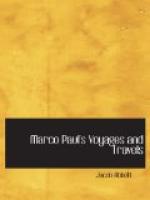“Besides,” continued Forester, “there is a great deal of other iron work, which the farmers must have done. Farmers can, generally, do most of the wood work which they want themselves. They can make their rakes, and drags, and cart-bodies, and sleds, and tool handles; but when they want iron work, they must go to the blacksmith’s. They can make a harrow-frame, but the blacksmith must make the teeth.”
“Now I should think,” said Marco, “that it would be easier to make the teeth than the frame.”
“Perhaps it is as easy, if one has the forge and tools,” replied Forester; “but the tools and fixtures, necessary for blacksmith’s work, are much more expensive than those required for ordinary wood work. There must be a forge built on purpose, and an anvil, supported on a solid foundation, and various tools. All these are necessary for shoeing a single horse, and when they are all procured, they will answer for all the horses of the neighborhood. Thus it happens, that though farmers do a great deal of their wood work themselves, at their own farms, in cold and stormy weather, they generally have their iron work done at a blacksmith’s at some central place, where it is easy and convenient for all of them to go.”
The above conversation took place between Marco and Forester, as they were walking along together through the village, toward the part of the town where the mills were situated. Just at this moment, Marco happened to cast his eyes across the street a short distance before them, and he saw a fire on the ground in a little yard. He asked Forester what that fire could be. As soon as Forester saw the fire, he exclaimed,
“Ah! they are putting a tire upon a wheel; that’s quite fortunate; we’ll go across and see them.”
So they left the path under the trees where they had been walking, and went obliquely across the street toward the fire. Marco saw that there was a large blacksmith’s shop there. It was a very neat-looking building, painted red. There was a large door in the front, and a very low window, with a shutter hanging over it, by the side of the door. In an open yard, by the side of the shop, was the fire. The fire was in the form of a ring. There were several men standing about it; one of them, whom Marco supposed was the blacksmith, by his leather apron, was putting on small sticks of wood and chips, here and there, around the ring. Marco saw that there was a large iron hoop, as he called it, on the fire. It was not really a hoop, it was a tire. It was made of a much larger and thicker bar of iron, than those which are used for hoops. It was a tire belonging to a wheel. The wheel was lying upon the ground near, ready to receive the tire. It was the hind wheel of a wagon. The wagon itself was standing in front of the shop, with one end of the hind axletree supported by a block.
“What do they heat the tire for?” asked Marco.
“To swell it,” replied Forester. “It is necessary to have the tire go on very tight, so as to hold the wheel together with all the force of the iron. Now when iron is heated it swells, and then shrinks again when it cools. So they heat the tire hot, and put it upon the wheel in that state. Then when it cools it shrinks, and binds the whole wheel together with a very strong grip.”




